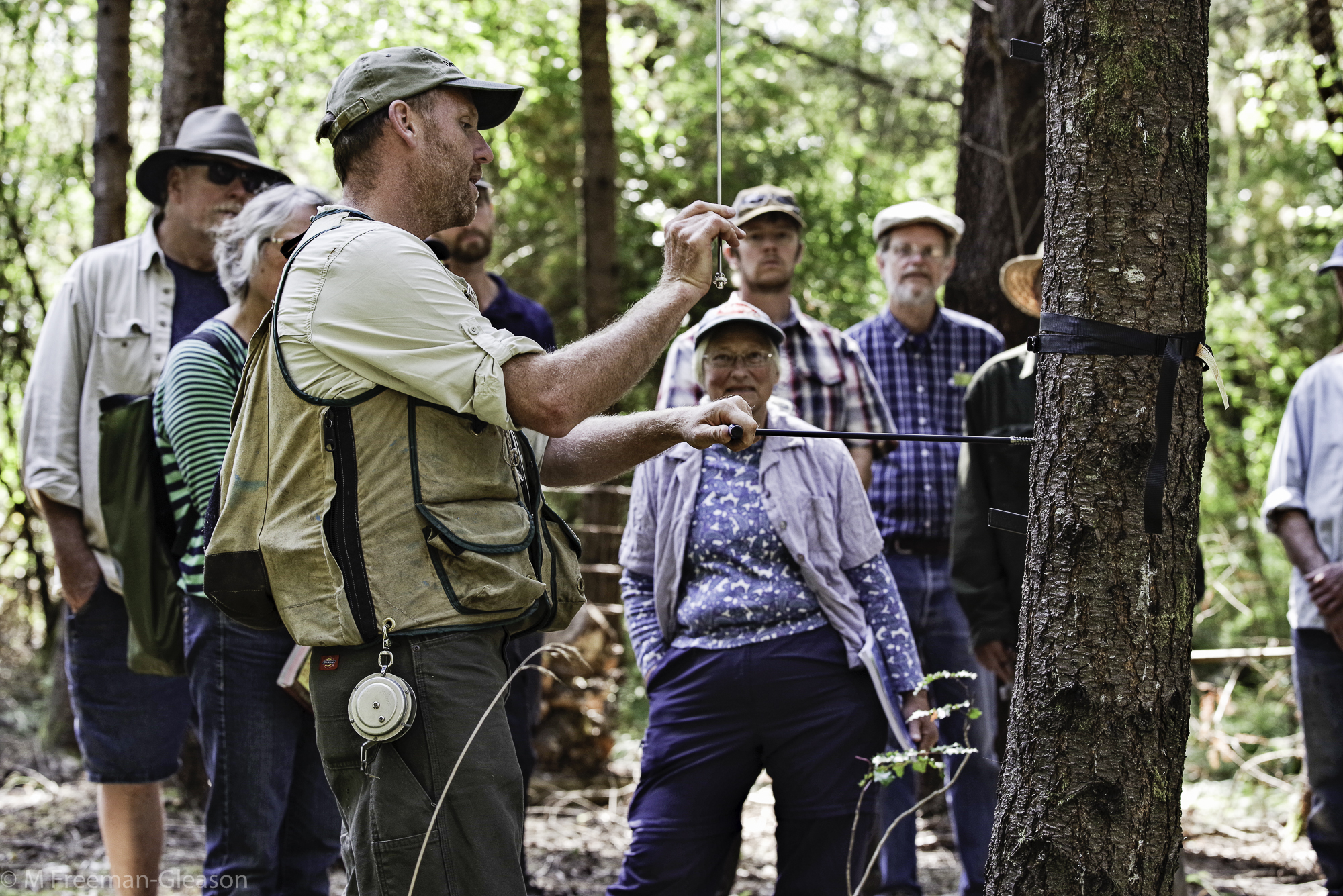Engaging with Citizen Science

At heart, we are all scientists taking in the world around us with curiosity and questions. You can likely tell us when your hummingbirds return each year, when the wildflowers will bloom, or how the snowfall this February differs from the norm. Now imagine if all that knowledge could be shared for everyone to learn from. Well, it can be — through citizen science!
As you explore the natural resources around you, the knowledge you gain helps you engage with nature and can support important research projects. A large part of the reason citizen science is so popular today is technology. Any of us can open an app or website and share our observations. This technology allows for large data sets from around the world, spanning a range of topics from astronomy and biology to weather and health research. Of course, here, we will focus on projects that help you get to know your forest and inform management decisions.
If you’ve taken an ecological forestry approach to your land, you may have done a Forest Biodiversity Assessment looking at forest and habitat types, trees, and understory plants. If so, you already have a lot of information to share. Contributing to the greater good is probably motivation enough, but these projects can help us better steward our forests. For the curious, many projects also provide great resources and training to help answer your management questions, and here are some the staff at NNRG find helpful.
Forest Health Watch is an initiative to facilitate research and education about the health of urban and rural forests in the Pacific Northwest. One project uses citizen observations to help identify areas of vulnerability for western redcedar. The project has 330 contributors and just over 2,500 observations. Those 330 citizen scientists gave 1,248 hours of their time, a more efficient way to get that amount of data than a handful of researchers could. The analysis will allow researchers to identify the factors contributing to healthy trees. You may remember Co-Director Joey Hubert presenting on this project in our January 2023 Fireside Chat.
eBird is based on the idea that every birdwatcher — like every forest steward — has unique knowledge and experience. Checklists were nothing new to birders, but the platform managed by Cornell Lab of Ornithology has enabled those to be shared with all of us. It’s a great way to track the birds around you through checklists, photos, and recordings. More than 100 million sightings are reported yearly, with participation growing rapidly. With the help of everyday observers like you, they have developed abundance and range maps for 2,068 species globally. eBird data was cited in 150 scientific papers in 2023.
Project BudBurst seeks to track the impact of climate change by understanding how plants and pollinators respond to global warming. Understanding the phenology, or the timing of plant cycles, is valuable in this work. There are several ways to engage – individually, as part of a group or family, or through educational resources. Many scientific publications have resulted from this freely available data, including one that helps to predict the timing of cherry blossoms in Washington, DC.
iNaturalist is a nonprofit network of naturalists, citizen scientists, and biologists with the goal of mapping and sharing observations of biodiversity globally. This project allows you to create lists of the species you’ve seen, report on where you saw them, and get help identifying the ones you don’t recognize. The project has documented 459,119 species with 170,288,554 observations. A Richland, WA, woman was the first to locate an Eastern bluebird in Washington and had her excitement confirmed through the iNaturalist app.
Citizen contributions to science can help to understand and steward our natural world. The stories of everyday individuals contributing their observations, whether it be the flush of chanterelles, the earliest choruses of Pacific tree frogs, or the bud break of the Douglas-fir, showcase the power of collective knowledge. Through projects like the ones shared below, each of us has the opportunity to play a vital role in ecological forestry, climate change mitigation, and biodiversity mapping. We hope you embrace the technology to help us and other researchers better steward resilient forests and mitigate climate change impacts. Together, we can continue to unlock the mysteries of our local forests and contribute knowledge to sustain forests everywhere.

Leave a Reply